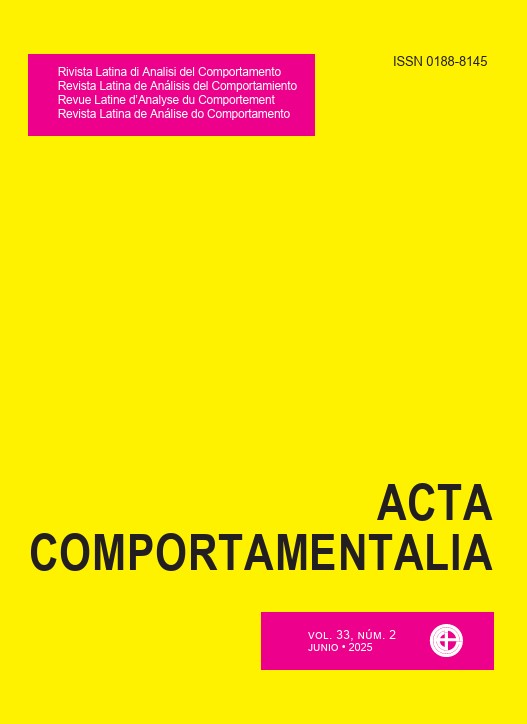Noncontingent Reinforcement History and Psychoactive Substance Abuse
DOI:
https://doi.org/10.32870/ac.v33i2.88588Keywords:
noncontingent reinforcement, substance use disorder, risk factor, behavioral history, psychopathology, concurrent schedules, impulsivity, relapse, superstitious behavior, chemical dependenceAbstract
Behavior Analysis describes the self-administration of psychoactive substances as an operant behavior that can be influenced by the parameters of contingencies of reinforcement that control drug use, contingencies of reinforcement that control behaviors competing with drug use, and past contingencies of reinforcement. Regarding the latter, it is known that present variables control behavior and variables that occurred in the past cannot control current behavior. Thus, when there is a suspicion that a variable that has already occurred is related to a certain response, it is necessary to explain the effects that started in the past and lasted until the moment when they could exert influence over that response. Among humans, substance consumption varies on a continuum from occasional use (low frequency) to harmful use (high frequency). Noncontingent reinforcement (NCR) is defined as a procedure in which a reinforcer stimulus is presented without regard to any pre-established classes of response. There is evidence from observational research and applied research of the occurrence of socially mediated NCR in the history of harmful drug users. If there is a relationship between NCR and harmful drug use, it is necessary to explain the effects of NCR that start in the past and continue until contact with drugs, leading to compulsion. The goals of this article are to present a) the possible effects of socially mediated NCR in the subject’s repertoire and b) how NCR conditions can produce changes in the subject repertoire and in the stimulus functions of the environment, such as if the subject comes into contact with drugs after these effects, the probability of abuse (high frequency of consumption) is increased. Among the effects of the socially mediated NCR, the following stand out: 1) an excess of superstitious behaviors (blaming others for producing positive reinforcers and/or eliminating aversive stimuli instead of taking responsibility for those consequences); 2) an excess of behaviors under control of sensory stimuli; 3) low frustration tolerance (low behavioral persistence in intermittent schedules, environments with aversive stimulation, increase in response cost, or decrease in the density of positive reinforcers); 4) deficit in rule-governed behavior repertoire; 5) a deficit in responding discriminatively under control of the impact of one’s own behavior on others; 6) a deficit in self-knowledge repertoire; 7) an excess of inconsistent self-esteem behaviors. When installed, all the aforementioned deficits and excesses facilitate an increase in the frequency of substance use and/or make it difficult to interrupt or decrease use. The article is expected to expand stimulus control of researchers and clinicians over possible relevant (not unique) aspects of the history and repertoire of drug users. A better understanding of the controlling variables of harmful drug use will enable the improvement and development of prevention and treatment programs.
Downloads
Downloads
Published
How to Cite
Issue
Section
License

<a rel="license" href="http://creativecommons.org/licenses/by-nc-sa/4.0/"><img alt="Licencia de Creative Commons" style="border-width:0" src="https://i.creativecommons.org/l/by-nc-sa/4.0/88x31.png" /></a><br />Este obra está bajo una <a rel="license" href="http://creativecommons.org/licenses/by-nc-sa/4.0/">licencia de Creative Commons Reconocimiento-NoComercial-CompartirIgual 4.0 Internacional</a>.






